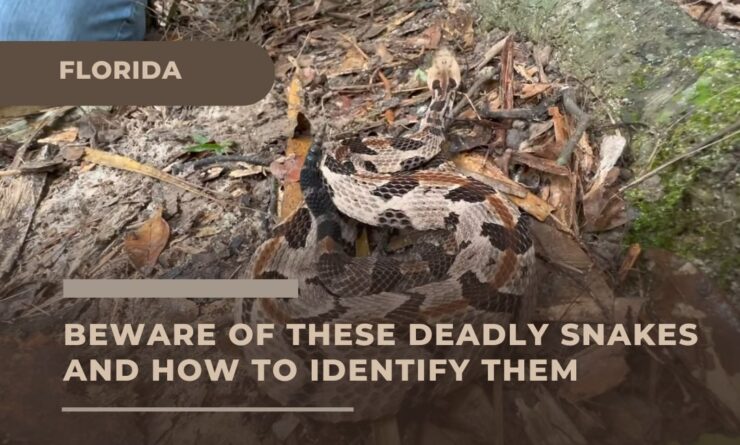During this time of year, it’s common to see an increase in snake sightings around your home. A local expert sheds light on the reasons behind this, how to identify venomous snakes, and the appropriate actions to take if encountered.
Not only do April showers result in May flowers in Florida, but they also bring snakes.
Ella Guedouar, a graduate snake biologist at Florida Gulf Coast University, explains that as rain increases and wetlands begin to fill, snakes need to relocate to higher, drier areas to find shelter, water, and prey.
Your home could potentially become an ideal location for these reptiles. Guedouar identifies a snake captured by a resident named Mike Falcone in a Fort Myers neighborhood as a young cottonmouth.
“This is a venomous viper; it’s a watersnake,” Guedouar says. “The band on the eye and the triangular-shaped head are good indicators of its identity.”
FWC Fact: Florida has only 6 species of venomous #snakes. The remaining 38 Florida snakes are harmless. #fact pic.twitter.com/qZjVMeo5E8
— MyFWC (@MyFWC) January 14, 2019
Another factor contributing to increased snake activity is the mating season.
“As we approach the end of the mating season, there’s a lot of activity among snakes searching for mates before the weather changes,” Guedouar explains. “Subsequently, females need time to find suitable locations to lay eggs or give birth.”
Egg-laying doesn’t occur until late summer, but for now, snakes are on the move.
Guedouar highlights that cottonmouths (also called water moccasins) and eastern diamondback rattlesnakes are the two venomous species most likely to be encountered.
“You can identify a diamondback by its large size, distinctive diamond pattern on its back, and a rattle at the end,” Guedouar describes.
Florida is home to a diverse wildlife and you should always keep your eyes open to stay secure and safe.
However, many non-venomous snakes have evolved to mimic venomous species to deter predators. Additionally, some venomous snakes change in appearance as they age.
Guedouar advises, “The best approach is to avoid touching any snake, particularly if you’re uncertain about its species. Cottonmouths, for instance, are lighter in color as juveniles but become darker and larger as they grow.”
The appearance of eastern diamondback rattlesnakes remains consistent throughout their lives. If one ends up on your property, Guedouar recommends not using a shovel.
“Spray the snake with a hose, as they dislike being sprayed in the face with water,” Guedouar suggests. “This maintains a safe distance between you and the snake while encouraging it to leave, or you can use a broom to gently push it away.”
Despite the desire to keep snakes at bay, the biologist emphasizes their ecological importance.
“I understand the safety concerns for children and pets, but the reality is we share this land with them,” Guedouar asserts. “We must learn to coexist. In my experience, snakes are usually more frightened of us than we are of them.”
For free snake removal assistance, contact FGCU’s snake team at swflrattlesnakes@gmail.com.
Source:
- https://winknews.com/2023/05/04/identifying-swfls-venomous-snakes-why-youll-be-seeing-more/













